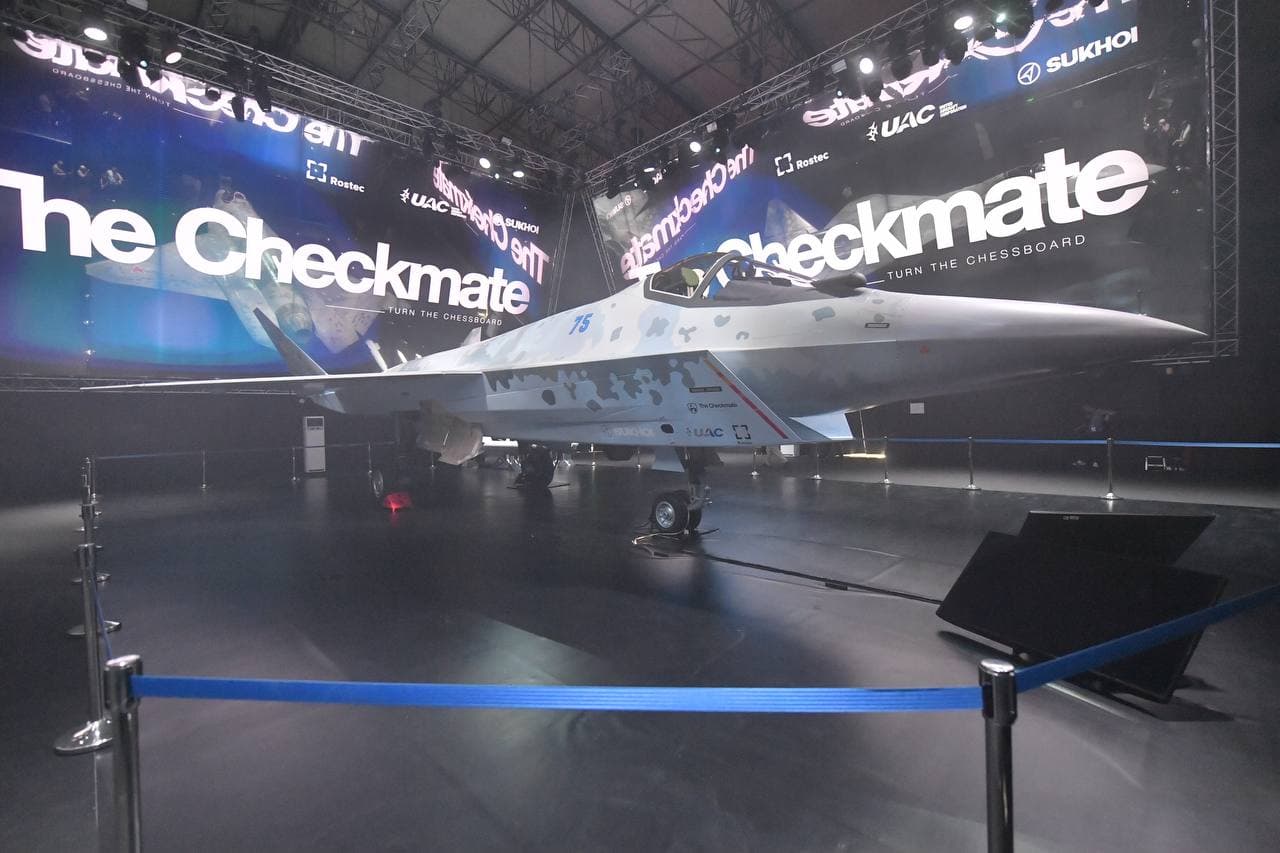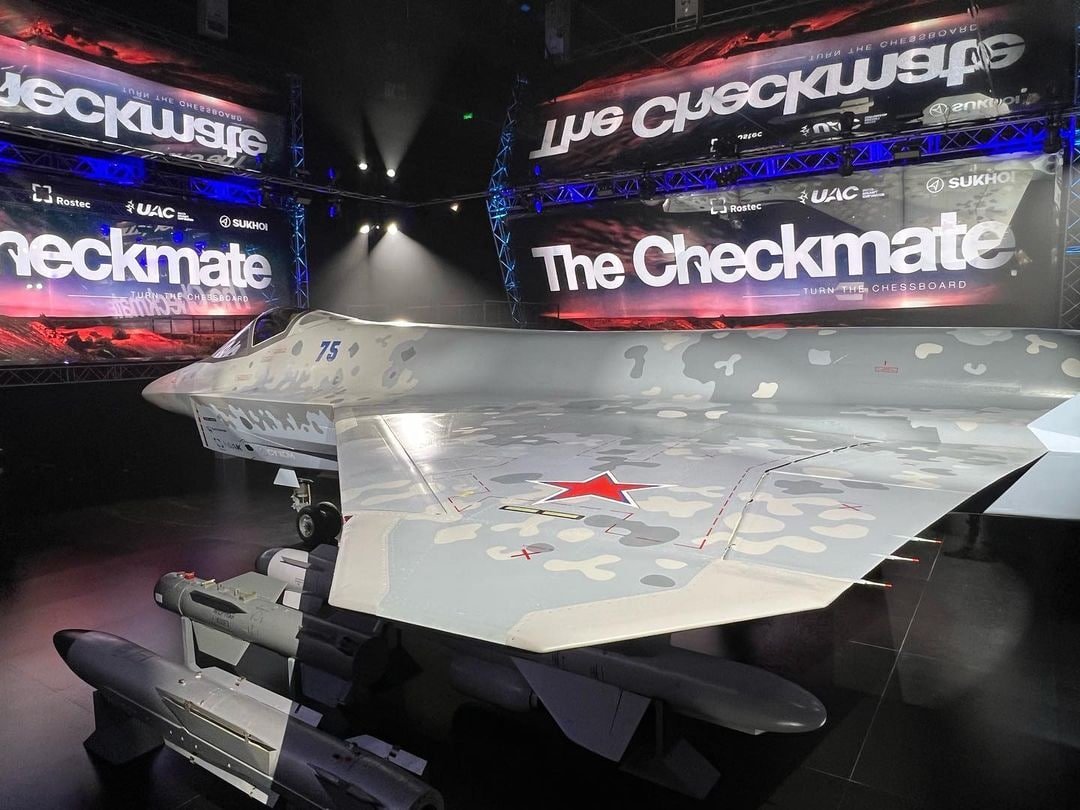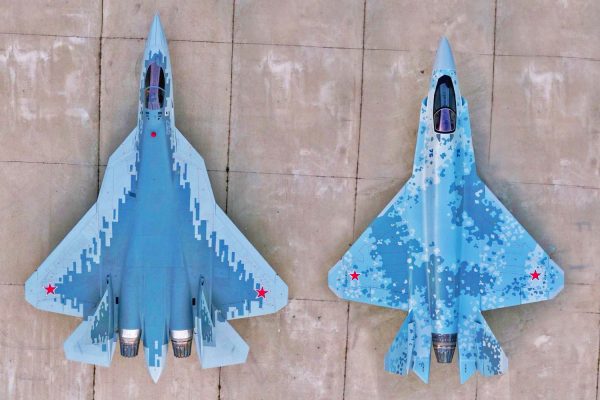The UAE, whose agreement for the F-35 stealth fighter with the US remains uncertain, has reportedly shown keen interest in Russia’s newest warplane, the Su-75 Checkmate while experts debate whether India could be a potential buyer.
Russia’s ‘Ground-Breaking’ MiG-31 Fighter-Interceptor Aircraft To Be Heavily Modified Amid Tensions With NATO
Russia showcased this fifth-generation combat aircraft at the Dubai Airshow earlier this month. Besides the Middle East, Moscow is looking to market the Sukhoi-built warplane to India, Vietnam, and African countries.
The F-35 Agreement
The UAE has a $23 billion agreement with the US to procure Lockheed Martin stealth fighters and other weaponry. The promise of 50 F-35 Lightning II aircraft is a major chunk of this deal.
However, the finalization of the contract is dependent on Abu Dhabi’s involvement in the Yemen conflict. The potential impact of the deal on Israel, a key customer of F-35 jets, is also being evaluated.
According to US legislation passed in 2008, Washington would assist Israel in maintaining its Qualitative Military Edge (QME), which means that Israeli forces will have superior military systems capable of defeating any credible traditional threat posed by any state, coalition, or non-state actor in the Middle East.

Additionally, it has been reported that the Biden administration, reflecting concerns about the UAE’s relationship with China, has added another condition — that the Gulf state terminates its 5G contract with controversial Chinese technology firm Huawei, which has been accused of corporate espionage by the US and seen as a security threat.
Amid such uncertainties, Abu Dhabi has expressed interest in Russia’s Su-75. Speaking at the Dubai Airshow 2021, Sergei Chemezov, head of Russia’s state defense and tech corporation Rostec, said that representatives of the UAE have shown interest in the single-engine Su-75 Checkmate light tactical fighter developed by Sukhoi, and want to have a closer look at it.
During a press briefing, Viktor Kladov, who leads Rostec’s international cooperation and regional policy department, told reporters that the firm had held talks at the show with the Tawazun Economic Council, Mubadala Investment Company, and Edge Group about the production of telecommunications technology and composite materials. He cited Abu Dhabi’s “keen interest” in upcoming tech as the reason behind choosing this Gulf state to co-produce the aircraft.

This is not the first time that Russia and the UAE have worked with the idea of cooperating in the military sector. At the 2017 UAE defense show IDEX, Moscow had declared that Rostec would co-develop a fifth-generation light combat fighter with Abu Dhabi.
Company officials did not provide a clear statement confirming or denying the speculation that the Checkmate is a result of this agreement.
Reuters quoted that Jean-Loup Samaan, a senior research fellow with the Middle East Institute at the National University of Singapore, as saying that “[t]he UAE likes the idea of cultivating ties with the Russian defense industry but it’s mainly a way to send a message to the US.”
Meanwhile, Kladov revealed bigger plans for the aircraft in the near future. “We foresee that maybe in five years, we have the unmanned version of Checkmate controlled by artificial intelligence,” he told reporters.
Export Plans For Su-75
Commenting on the aircraft’s qualities that make it suitable for other countries to buy, Zhemezov said, “[w]e have one major advantage compared to all the other [foreign] aircraft.
First of all, this is an open configuration plane: we are offering a platform that can carry any armaments that the customer may wish. Besides, we outfit it with various electronics, electronic warfare systems, target acquisition capabilities, and so on.”
“We offer the options that are available and have been tested on the Su-57. These systems have been developed and tested and they have proven their efficiency and thus they are simpler and cheaper,” the Rostec chief said, in the context of foreign armaments that have to be adapted to the Russian warplane.
“And, of course, the price will vary, depending on these options. I hope that the baseline price will be around $30-35 million,” he added.
Along with the cost, the aircraft’s production timeline was also announced at the Dubai Airshow. While the first flight of the warplane is planned for 2023, its serial production is slated to begin in 2026, Yury Slyusar, the general director of United Aircraft Corporation (UAC), which manufactures Sukhoi jets, confirmed.
In addition to advanced characteristics such as stealth characteristics and supersonic cruising speeds that are required of every fifth-generation fighter, the corporation claims that the new design will also include innovative technologies, especially artificial intelligence (AI) features to assist the pilot.
The firm also claims that this aircraft has been designed to reduce service costs and be easily adapted to the different needs customer countries have.
This is an improvement since Sukhoi, as well as Russia’s MiG aircraft-makers, has only produced twin-engine fighters since the 1980s.
Some experts believe that this has been disadvantageous to Moscow in certain foreign markets where cheaper single-engine aircraft are preferred by customers. With Checkmate, Russia plans to change this trend and hence, a major emphasis on its export.

Yury Borisov, the Deputy Prime Minister of Russia, told Zvezda TV, “First of all, it will indeed be oriented towards African countries, India and Vietnam. The demand for these aircraft is quite high, it is estimated at least 300 aircraft in the near future.”
Will India Buy Checkmate?
While the jet may be pitched to India, a potential deal with New Delhi remains doubtful, The Week quoted Justin Bronk, a research fellow at the British think tank Royal United Services Institute (RUSI).
Bronk, in a chat with aviation magazine Hush-Kit, had expressed his skepticism about India being interested in the Checkmate fighter.
“India is likely to be very wary after its experiences with the PAK FA/FGFA program and poor support for the Su-30MKI fleet post-acquisition,” he was quoted as saying.
PAK FA, the project that developed the Su-57 fighter, was originally supposed to involve India and Russia. This was to be called the Fifth-Generation Fighter Aircraft (FGFA). However, in 2018, India decided to pull out of the project due to the Indian Air Force’s reported concerns regarding the stealth features and engines of the Su-57.
Other than this somewhat bitter experience, the cost is another obstacle between India and the Checkmate. Most major stealth fighter projects have seen extensive cost overruns and development delays in their development.

Along with potential cost overruns and probable difficulties in development, the IAF will also have to factor in India’s indigenous projects currently in development, including the single-engine HAL Tejas Mark-2, also called Medium Weight Fighter (MWF), and the Advanced Medium Combat Aircraft (AMCA) programs.
Former IAF chief RKS Bhadauria had said that the service was supporting the AMCA, which is scheduled to make its first flight by 2025-26.
“They [DRDO] are looking at a timeline of 2027 to 2030 to put the stealth fighter into production. If that materializes, the fighter should be operationally available to IAF as a squadron by 2032,” Bhadauria told Hindustan Times.
He had further added that the IAF was keen on the integration of sixth-generation technologies into the AMCA. Currently, the Checkmate does not seem to have enough time to be ready to compete for the IAF’s requirement to buy 114 combat aircraft.
However, a top Indian defense analyst told the EurAsian Times that there is a high possibility of India acquiring the Checkmate, explaining that this will not impact the development of the AMCA jet.
Abhijit Iyer-Mitra, a senior fellow at the Institute of Peace and Conflict Studies (IPCS) said – India’s plan to acquire a single-engine jet has been on the anvil for nearly two decades. The MMRCA tender was for a single-engine jet but was later diverted as the Su-30s were not performing well and India wanted another twin-engine jet.
“The second time they did it again with MMRCA 2.0 because Russians did not have a single-engine jet to offer. “Now that the Russians have a single-engine jet, they could enter it into the new competition and I personally feel it stands a really good chance to win the Indian contract,” Iyer-Mitra added.
The only other option that New Delhi has is the American F-35 but it has not been offered yet and is unlikely to be offered as India is set to deploy S-400 missiles. This leaves India with the Checkmate given it is the only visually stealth aircraft which we’ll have access to for a very long time,” he said.
- Written by Shreya Mundhra/EurAsian Times Desk
- Contact the author at: shreyya.mundhra@gmail.com
- Follow EurAsian Times on Google News




